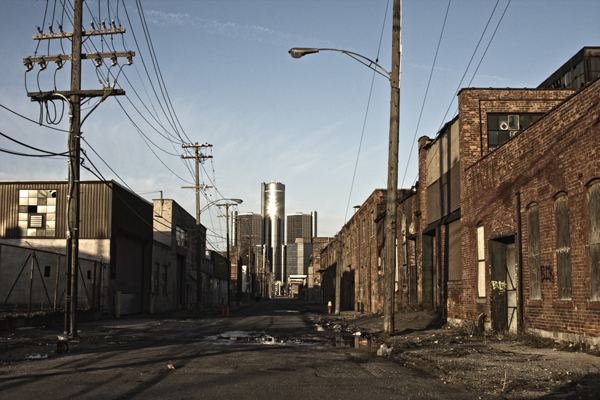3Qs: Detroit’s ‘perfect storm’

 Detroit this month became the largest American city to declare bankruptcy, a move by the state-appointed emergency manager to help right one of the nation’s most struggling urban areas. We asked Thomas J. Vicino, an associate professor of political science and the director of the Master of Public Administration program, to look at the factors that brought about Detroit’s decline and what could come next for the city.
Detroit this month became the largest American city to declare bankruptcy, a move by the state-appointed emergency manager to help right one of the nation’s most struggling urban areas. We asked Thomas J. Vicino, an associate professor of political science and the director of the Master of Public Administration program, to look at the factors that brought about Detroit’s decline and what could come next for the city.
What happened to bring Detroit to the position it is in today?
This is the classic case of urban decline. “Motor City” was a large central city that was—no pun intended—an engine of the American economy and a city with the kind of good jobs that made a strong middle class possible.
After World War II, most industrial cities looked like Detroit. But in this case, we saw a different trajectory, one that was exacerbated by racial issues and industrial decline. In 1967, Detroit saw some of the worst race riots in the nation, something that only exacerbated the flight of middle class white families into the suburbs. Sprawl only increased segregation in Detroit, which in turn, drove more white families out.
Add in the decline of the American auto industry—which created a strong middle class, and then destroyed it—and we have a perfect storm that makes recovery difficult. As more residents left Detroit, the tax base shrunk, leaving the city with fewer resources to provide for basic services and maintain its infrastructure, something the federal government has not made any significant contribution toward for decades. And as the city continued to decline, the region witnessed more families, including the new black middle class, leave Detroit too, which created a downward spiral for the socioeconomic decline of Detroit.
All of this did not happen accidentally. For decades, federal housing and transportation policies have subsidized suburban sprawl, which had the unintended consequence of developing a suburban middle class at the detriment of the city itself. But let’s not forget, in its heyday, Detroit was home to nearly two million residents and was one of the wealthiest cities in the world. Unfortunately, by the beginning of the 21st century, Detroit simply could no longer sustain itself and its basic services for approximately 700,000 residents today.
What is the response to the situation?
The Michigan state government has appointed an emergency manager, who is now effectively running the city and doing everything he can to set things right. He’s said, effectively, that by declaring bankruptcy, the city can wipe the slate clean and start again. But that comes at great cost to public employees, who simply may no longer have a pension as well as residents who depend on city services. It is a solution that is likely to work, but it will be very difficult.
Before it got to this, the city tried other approaches: downsizing the public service areas of the city and making major cutbacks to city service such as public safety, schools, and infrastructure. Now, the state has taken over, and the emergency manager appointed by Gov. Rick Snyder has declared bankruptcy. This should give the city the latitude to restructure many of its debts and contracts in a way it was not previously able to do.
Proponents of building sustainable cities are looking closely at Detroit, which they see as a lab to test new ideas such as green housing stock and urban farming. And there is an increased push toward regionalism, both in terms of sharing public services and regional planning between Detroit and its inner-ring suburbs. These suburbs are also showing signs that they could be facing in 10 or 15 years the same kind of problems Detroit is facing now, so having everyone at the table is important.
Detroit’s urban collapse has drawn significant national attention. How might its decline shape future urban policy in the United States?
If we do not look at the problems and how they happened, we could very well see what is happening now in Detroit happening in cities across America. Already places like East St. Louis, Cleveland, and urban areas across California are experiencing similar patterns of decline, though each for its own reasons. So it is valuable that the fall of Detroit has been so widely covered by the media.
If we can get these issues onto the policy agenda, we can start discussing not only the problems, but also the mechanisms for effective solutions. We need to get the federal government to look at cities more seriously; they are increasingly home to more sustainable forms of living. And they are the very kinds of communities and cultural spaces we cannot afford to lose.
What’s happened to Detroit is not something new. It did not simply occur because of the crash of the housing market or any other single event. It is the result of years of neglect and policy decisions that favored suburbs over cities, something that has to change if society cares about the future of sustainable living.





